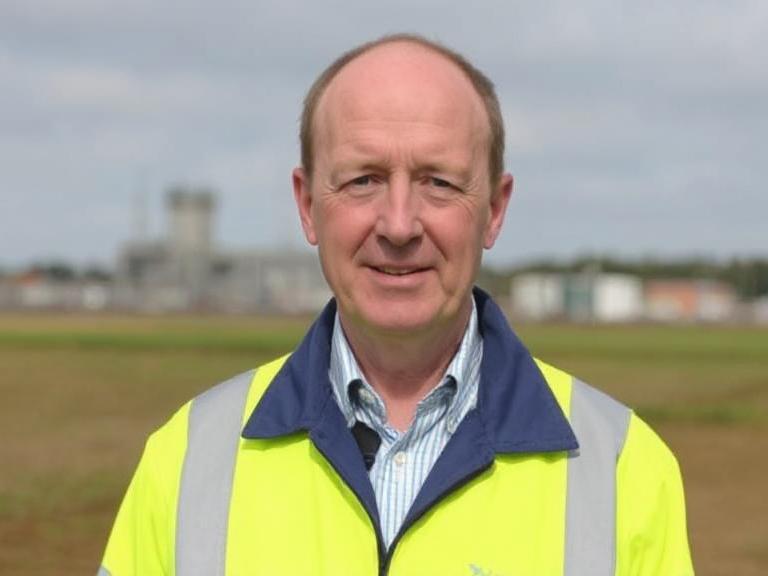The pro-nuclear Labour administration is designing a £15 billion successor for Britain’s arsenal at Aldermaston.
The 300-hectare (750-acre) military facility at Aldermaston is a strange sight, situated in the middle of rural Berkshire. It consists of a few contemporary offices, some of which are still under construction, and a collection of institutional buildings from the 1950s and 1960s that are heated by a steam tube system more commonly found in Soviet buildings.
However, the equipment within the complex—one of Britain’s most sensitive defense sites—is very different from that hostile Cold War period. The expansive campus is the biggest of three sites where Britain produces its nuclear weapons. Without conducting any explosive tests, the UK will develop and construct a £15 billion replacement for its present arsenal.
To safeguard the radioactive materials and the 7,500 workers at the site, armed police officers equipped with carbine rifles patrol and keep watch from the roofs. The employees are employed by the erstwhile Atomic Weapons Establishment, or AWE, whose project is essential to Labour’s aspirations to revitalize nuclear with weapons that might be in production until the 2070s.
As the first defense secretary to visit the location since 2018, John Healey made the case Thursday that Labour was committing to a generational commitment to support costly weapons that he and other government officials thought would defend the UK by never being deployed.
Healey questioned out loud why some of his immediate Conservative predecessors had not visited, saying, “We have a government that recognizes that we need to invest now if we’re going to be able to maintain our strength of our independent UK nuclear deterrence in the decades to come.”

Jeremy Corbyn, the former leader of Labour, opposed nuclear weapons; but, under Keir Starmer, the party made a decisive transition to the pro-nuclear stance well before it won the election. It has now accelerated civil nuclear development, approving this month the next nuclear weapon and a new £14.2 billion reactor at Sizewell in Suffolk.
Ministers think the public supports their commitment to nuclear. They claim that public support for the UK keeping its nuclear weapons stockpile is rising at a time of global unpredictability, not least because Israel attacked Iran to stop it from obtaining its own nuclear weapon.
According to YouGov polling for the Ministry of Defence, support for the submarine-based nuclear weapons system Trident increased to 65% in March 2025, the highest level since the department’s sampling started in 2018.
Aldermaston is where parts for Britain’s Holbrook nuclear warhead are conceived, tested, and constructed. The actual warheads are primarily put together in the neighboring Burghfield location before being driven to Coulport, Scotland. At nearby Faslane, the Trident missiles with their British warheads are put onto submarines after the construction process is finished.
With the first stages of the new warhead’s development underway, operations at Aldermaston have started to scale up. The state-owned corporation now employs 9,500 people, including almost 1,500 new hires in the last 12 months. Labour is keen to promote skilled employment like this.
Astraea, the new gadget, won’t be prepared for use until the 2030s or 2040s. Although its exact explosive capacity is unknown, independent researchers predict it will likely surpass the 80–100 kt Holbrook and could even approach the 475 kt standard established by the most potent US warhead.
The bomb detonated on Hiroshima, for example, was 15kt and killed between 70,000 and 140,000 people (estimates vary greatly).
In order to replicate a nuclear detonation, it will be constructed at Aldermaston mostly using modest test explosions that are then extrapolated using an on-site supercomputer called Damson. According to one engineer, Damson consumed 17MW of electricity, which is far more than the 2.7MW needed by the Met Office’s supercomputer, which AWE claims can execute 4.3 million billion computations per second.
Orion, a group of 12 lasers that can replicate the explosion of a nuclear weapon when combined, is the other important facility on the property. According to one expert, there was “no danger of blowing up Reading” and the energy required was “no greater than boiling a teaspoon of water.” In any case, to prevent any potential explosions, the lasers combine in a vacuum.
Although the quantities involved are small, sometimes only a few millimeters in size, materials meant for the warhead are tested in the laser to determine how they will react when the bomb is exploded. Staff members are requested to construct a small model of a bicycle with handlebars and spokes in order to test their ability to set up the studies. After six months, some employees are able to handle it, while others are unable to.
However, it is unclear why a £15 billion investment on a new nuclear warhead is required since Holbrook warheads may still be functional with regular refurbishments. The US is developing a new warhead, the W93, which is one of the reasons for the upgrading. To save money, the US and UK programs have worked together, sharing design elements. However, they have not used fissile materials, such as enriched uranium or plutonium, which would violate the nuclear non-proliferation pact that both nations have ratified.
According to David Cullen, a nuclear specialist at the Basic think tank, “the UK to maintain its position as a member of the nuclear club” was a second justification. Part of the problem is skill-related: “If you don’t have warhead designers who have actually made a nuclear bomb, the capability to deploy warheads atrophies,” he continued. To put it another way, it is the price the UK pays to keep a position close to the top of the diplomatic table.
